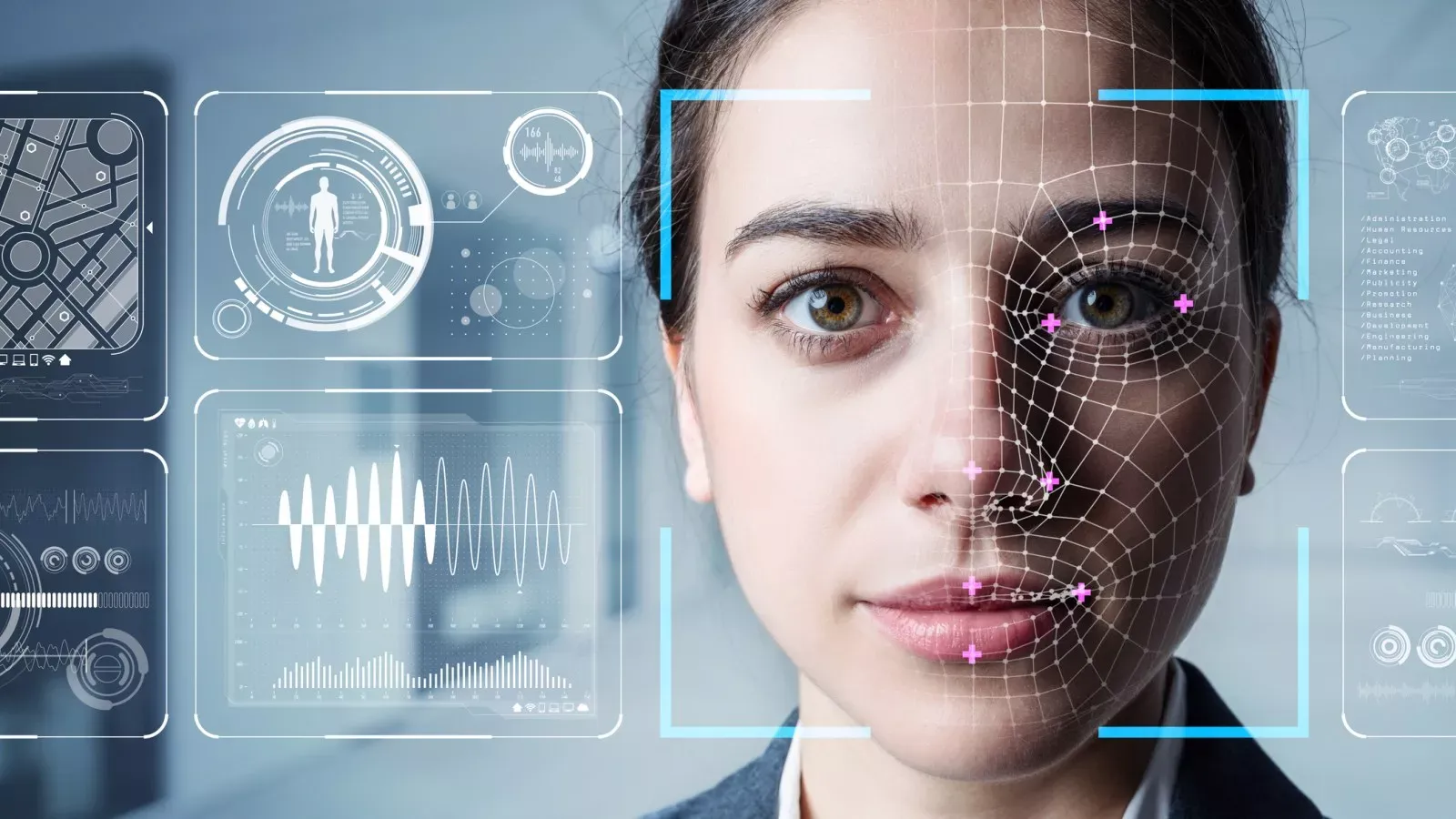In the ever-evolving landscape of the advertising industry, a new trend is making waves: the use of artificial intelligence (AI) to create jingles and musical compositions. As technology continues to push the boundaries of creativity, the impact of AI-generated jingles is becoming increasingly significant. This article delves into the implications of this emerging phenomenon, exploring both the opportunities and challenges it presents for the advertising world.
The Emergence of AI-Generated Jingles

The Potential of AI in Jingle Composition
Artificial intelligence has shown remarkable capabilities in various creative domains, including music composition. By leveraging machine learning algorithms, AI systems can analyze vast datasets of existing jingles and musical compositions, identifying patterns and generating novel tunes that mimic the style and structure of successful earworms.
Table: Advantages of AI-Generated Jingles
| Advantage | Description |
|---|---|
| Efficiency | AI-powered jingle creation can significantly reduce the time and resources required for traditional, human-led composition. |
| Scalability | AI systems can generate a large number of unique jingles, allowing for greater versatility and customization in advertising campaigns. |
| Personalization | AI can tailor jingles to specific target audiences, taking into account factors such as demographics, preferences, and cultural contexts. |
| Cost-Effectiveness | The automated nature of AI-generated jingles can potentially reduce the overall costs associated with jingle production. |
The Challenges of AI-Generated Jingles
While the potential of AI-generated jingles is undeniable, there are also significant challenges and concerns that the industry must grapple with.
- Authenticity and Emotional Connection:
- Concern: There is a risk that AI-generated jingles may lack the authenticity and emotional resonance that human-composed jingles often possess.
- Potential Implications: Consumers may feel disconnected from AI-generated jingles, undermining the effectiveness of the advertising campaign.
- Intellectual Property and Creativity:
- Concern: The use of AI in jingle composition raises questions about intellectual property rights and the role of human creativity in the advertising industry.
- Potential Implications: Legal and ethical debates may arise around the ownership and attribution of AI-generated content.
- Ethical Considerations:
- Concern: The widespread adoption of AI-generated jingles may raise concerns about the ethical implications, such as job displacement for human composers and potential bias in the creative process.
- Potential Implications: Advertisers and industry stakeholders must carefully navigate the ethical landscape to ensure responsible and transparent use of AI technology.
The Impact of AI-Generated Jingles on the Advertising Industry
Disrupting Traditional Jingle Composition Practices
The rise of AI-generated jingles is poised to disrupt the traditional methods of jingle composition within the advertising industry. As AI systems become more sophisticated, they may gradually replace the need for human composers, leading to significant changes in the creative workflows and the overall structure of the industry.
Unordered List: Potential Impacts on Traditional Jingle Composition Practices
- Shift in the role of human composers: Advertisers may increasingly rely on AI-generated jingles, leading to a reduced demand for human-composed music.
- Transformation of the creative process: The integration of AI into the jingle composition process may require advertisers to rethink their creative workflows and collaboration models.
- Evolving skill sets for industry professionals: Advertising agencies and creative teams may need to develop new skill sets to effectively incorporate AI-generated jingles into their campaigns.
- Increased competition and specialization: The accessibility of AI-generated jingles may lead to a more competitive landscape, encouraging advertisers to specialize and differentiate their creative offerings.
Opportunities for Personalization and Targeted Advertising
One of the most promising aspects of AI-generated jingles is the potential for personalization and targeted advertising. By leveraging AI’s ability to analyze consumer data and preferences, advertisers can create customized jingles that resonate with specific target audiences.
Table: Personalization Strategies with AI-Generated Jingles
| Personalization Approach | Description |
|---|---|
| Demographic Targeting | AI can generate jingles tailored to the age, gender, or cultural background of the target audience. |
| Psychographic Profiling | AI can analyze consumer behaviors, interests, and values to create jingles that align with their emotional preferences. |
| Contextual Relevance | AI can generate jingles that adapt to the specific context of the advertisement, such as the product, location, or time of day. |
| Multi-Language Adaptation | AI can create jingles that seamlessly translate or adapt to different languages and cultural nuances. |
By leveraging these personalization strategies, advertisers can create a more engaging and memorable experience for their target audience, potentially leading to increased brand recognition and customer loyalty.
Enhancing Efficiency and Cost-Effectiveness
The integration of AI into the jingle composition process can also bring significant improvements in efficiency and cost-effectiveness for the advertising industry.
- Streamlined Workflow:
- AI-generated jingles can significantly reduce the time and resources required for traditional jingle composition, allowing advertisers to respond more quickly to market demands and campaign timelines.
- Automated jingle creation can free up creative teams to focus on other aspects of the advertising campaign, such as conceptualization, visual design, and content strategy.
- Scalability and Versatility:
- AI systems can generate a large number of unique jingles, providing advertisers with a diverse portfolio of options to choose from.
- This scalability can enable advertisers to experiment with different jingle variations and iterations, allowing for greater flexibility and optimization within their campaigns.
- Cost-Savings:
- The automated nature of AI-generated jingles can potentially reduce the overall costs associated with jingle production, including studio time, musician fees, and post-production expenses.
- This cost-effectiveness can be particularly beneficial for small-to-medium-sized businesses or startups with limited marketing budgets.
By harnessing the efficiency and cost-effectiveness of AI-generated jingles, advertisers can allocate resources more strategically, optimizing their budgets and improving the overall return on investment for their advertising campaigns.
Navigating the Ethical Considerations of AI-Generated Jingles

As the advertising industry embraces the use of AI-generated jingles, it is essential to address the ethical implications and ensure responsible implementation.
Preserving Human Creativity and Artistic Integrity
One of the primary concerns surrounding AI-generated jingles is the potential impact on human composers and the role of creativity in the advertising industry.
- Maintaining a Balance:
- Advertisers must strive to strike a balance between the use of AI-generated jingles and the continued involvement of human composers.
- Collaborative approaches that leverage the strengths of both AI and human creativity can help preserve the artistic integrity of jingle composition.
- Acknowledging Authorship and Attribution:
- Clear guidelines and policies must be established to address the ownership and attribution of AI-generated jingles, ensuring fair recognition for all contributors.
- Transparent communication with consumers about the use of AI in jingle composition can help maintain trust and authenticity.
Addressing Bias and Diversity Considerations
AI systems, like any technology, can potentially perpetuate or amplify biases inherent in the data used to train them. Advertisers must be vigilant in addressing these biases to ensure inclusive and representative jingle compositions.
- Diverse Data Sources:
- Advertisers should strive to incorporate diverse datasets and perspectives in the training of AI systems to generate jingles that reflect the diversity of their target audiences.
- Collaboration with experts in fields such as music, cultural studies, and social justice can help identify and mitigate potential biases.
- Ongoing Monitoring and Evaluation:
- Advertisers should implement robust monitoring and evaluation processes to assess the inclusivity and representation within their AI-generated jingles.
- Feedback mechanisms and iterative improvements can help refine the algorithms and enhance the inclusivity of the jingle compositions.
By addressing these ethical considerations, the advertising industry can harness the power of AI-generated jingles while upholding the integrity of the creative process and ensuring inclusive and ethical practices.
Integrating AI-Generated Jingles into Advertising Campaigns
As advertisers explore the integration of AI-generated jingles into their campaigns, there are several key strategies and best practices to consider.
Aligning AI-Generated Jingles with Brand Identity
Ensuring that AI-generated jingles seamlessly align with a brand’s identity and values is crucial for the success of the advertising campaign.
- Brand Attribute Mapping:
- Advertisers should clearly define the brand’s attributes, such as personality, tone, and visual style, to guide the development of AI-generated jingles.
- This alignment helps to create a cohesive and recognizable brand experience for the target audience.
- Iterative Refinement:
- Advertisers should engage in an iterative process of testing and refining AI-generated jingles to ensure they resonate with the brand’s identity and target audience.
- Incorporating consumer feedback and market insights can help fine-tune the jingles to achieve the desired brand impact.
Leveraging Multimedia Integration
The integration of AI-generated jingles with other multimedia elements, such as visuals, animation, and interactive experiences, can enhance the overall effectiveness of the advertising campaign.
- Synchronized Experiences:
- Advertisers should explore opportunities to synchronize AI-generated jingles with complementary visual and interactive elements, creating a cohesive and engaging multimodal experience.
- This integration can help to amplify the emotional resonance and memorability of the advertising campaign.
- Adaptive Content Optimization:
- Advertisers can leverage AI-powered algorithms to dynamically adapt the jingles and other multimedia elements based on factors such as user interactions, device preferences, and real-time contextual data.
- This adaptive approach can enhance the personalization and relevance of the advertising experience for the target audience.
Measuring the Effectiveness of AI-Generated Jingles
Evaluating the performance and effectiveness of AI-generated jingles is crucial for advertisers to make informed decisions and optimize their campaigns.
- Engagement Metrics:
- Advertisers should track metrics such as brand recall, ad recognition, and emotional response to gauge the impact of AI-generated jingles on the target audience.
- These insights can inform the refinement of the jingles and the overall advertising strategy.
- Conversion and ROI Analysis:
- Advertisers should also analyze the impact of AI-generated jingles on key performance indicators, such as website traffic, lead generation, and sales conversions.
- This data-driven approach can help demonstrate the return on investment (ROI) of incorporating AI-generated jingles into the advertising campaign.
By aligning AI-generated jingles with brand identity, leveraging multimedia integration, and measuring the effectiveness of these jingles, advertisers can unlock the full potential of this emerging technology and deliver impactful, memorable advertising experiences.
The Future of AI-Generated Jingles: Trends and Predictions

As the advertising industry continues to embrace the use of AI-generated jingles, it is essential to explore the potential future trajectories and emerging trends in this rapidly evolving landscape.
Advancements in AI Capabilities
Ongoing advancements in AI technology, particularly in the areas of machine learning and natural language processing, are likely to drive further improvements in the quality and versatility of AI-generated jingles.
- Increased Realism and Emotional Resonance:
- AI systems may become more adept at capturing the nuances of human musicality, including emotional expression, rhythmic complexity, and tonal variations.
- This could help bridge the gap between AI-generated jingles and the authenticity and emotional impact of human-composed music.
- Multimodal Integration:
- AI-generated jingles may increasingly integrate with other multimedia elements, such as visuals, animation, and interactive experiences, creating more immersive and engaging advertising campaigns.
- This convergence of technologies could further enhance the personalization and contextual relevance of the advertising experience.
Evolving Regulatory and Legal Frameworks
As the use of AI-generated content in advertising grows, there will likely be a need for the development of regulatory and legal frameworks to address issues related to intellectual property, attribution, and ethical considerations.
- Intellectual Property Rights:
- Advertisers and industry stakeholders may need to collaborate with policymakers and legal experts to establish clear guidelines and standards for the ownership and usage of AI-generated jingles.
- This could involve the development of new models for intellectual property rights and licensing agreements.
- Ethical Oversight and Governance:
- Regulatory bodies and industry organizations may introduce guidelines and best practices to ensure the responsible and ethical use of AI in jingle composition and advertising.
- This could include measures to address bias, protect consumer privacy, and maintain transparency in the creative process.
Collaborative Approaches and Hybrid Models
As the advertising industry navigates the integration of AI-generated jingles, there may be a shift towards more collaborative and hybrid approaches that leverage the strengths of both AI and human creativity.
- Human-AI Collaboration:
- Advertisers may explore models where AI-generated jingles are used as a starting point or inspiration, with human composers refining and enhancing the compositions.
- This collaborative approach could help maintain the authenticity and emotional resonance of the jingles while benefiting from the efficiency and scalability of AI-powered composition.
- Hybrid Approaches:
- Advertisers may adopt a hybrid model where AI-generated jingles are used in specific scenarios, such as personalized or contextual advertising, while human-composed jingles are retained for larger campaigns or more strategic brand positioning.
- This flexibility could allow advertisers to leverage the strengths of both AI and human creativity, tailoring the approach to the specific needs of the advertising campaign.
As the advertising industry continues to evolve, the integration of AI-generated jingles will likely become an increasingly integral part of the creative landscape. By embracing these emerging trends and proactively addressing the associated challenges, advertisers can harness the power of AI to deliver more personalized, efficient, and impactful advertising experiences.
Conclusion
The rise of AI-generated jingles in the advertising industry represents a significant shift in the creative landscape. While this technology presents numerous opportunities, such as increased efficiency, scalability, and personalization, it also raises important ethical and practical considerations that the industry must navigate.
Advertisers must strike a delicate balance between leveraging the capabilities of AI and preserving the authenticity and emotional resonance that human-composed jingles often provide. By addressing issues of intellectual property, bias, and artistic integrity, the industry can ensure the responsible and ethical integration of AI-generated jingles into advertising campaigns.
As the technology continues to advance, the future of AI-generated jingles will likely involve further integration with multimedia elements, the development of collaborative and hybrid models, and the emergence of new regulatory frameworks. By embracing these trends and proactively addressing the challenges, advertisers can harness the power of AI to deliver more engaging, personalized, and impactful advertising experiences that resonate with their target audiences.



